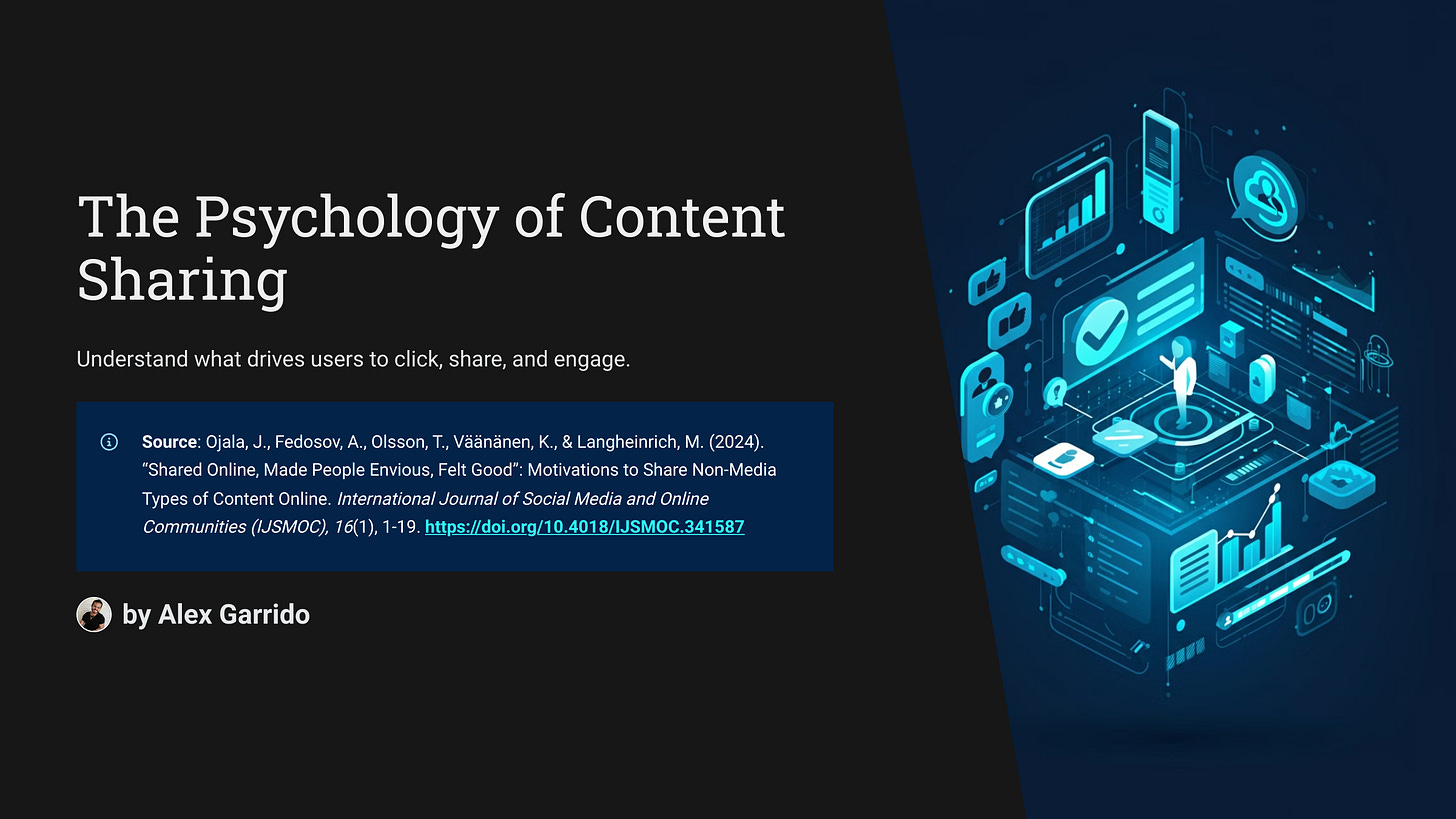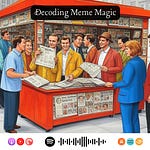Source:
Ojala, J., Fedosov, A., Olsson, T., Väänänen, K., & Langheinrich, M. (2024). “Shared Online, Made People Envious, Felt Good”: Motivations to Share Non-Media Types of Content Online. International Journal of Social Media and Online Communities (IJSMOC), 16(1), 1-19. https://doi.org/10.4018/IJSMOC.341587
In the latest episode of Marketing Science Lab, we take a deep dive into groundbreaking research on user motivations for sharing non-traditional content online. The study, published in the International Journal of Social Media and Online Communities, sheds light on the evolving landscape of digital sharing and offers valuable insights for marketers looking to enhance their content strategies.
As the digital world continues to evolve, so too do the ways in which users share content online. Moving beyond traditional media like photos and videos, people are now sharing everything from music playlists and travel itineraries to workout data and even their physical possessions through sharing economy platforms. But what drives this behavior, and how can marketers tap into these motivations to create more engaging user experiences?
The Six Motivating Factors Behind Non-Media Content Sharing
The research identifies six key factors that motivate users to share non-traditional content:
Discovery: Users are driven by the desire to learn new things and find exciting content. This factor is particularly prominent in music sharing and travel planning.
Curating Self: Sharing becomes a form of self-expression and personal branding. Users craft their online personas through the content they choose to share.
Connectedness: The need to belong and build relationships remains a strong motivator in the digital space. Sharing creates opportunities for users to connect with like-minded individuals.
Collaboration: Particularly evident in sharing economy services and virtual possessions, users are motivated by the ability to work together and create collective value.
Enjoyment: The fun factor shouldn't be underestimated. Positive experiences and enjoyment play a crucial role in encouraging continued sharing.
Instrumental: Tangible benefits, such as financial gains or increased social status, can be powerful motivators, especially in sharing economy contexts.
Implications for Marketers and Product Designers
Understanding these motivating factors opens up new possibilities for creating more engaging and effective digital experiences. Here are some key takeaways for marketers:
Design for Multiple Motivations: Incorporate features that address various motivating factors. For example, a fitness app could combine personal goal tracking (curating self) with social challenges (collaboration) and inspirational content (enjoyment).
Leverage the Power of Community: Foster a sense of belonging and contribution among users. Implement features that allow for collaboration, comparison, and peer support.
Balance Privacy and Sharing: Address privacy concerns proactively to encourage sharing. Provide clear controls over what is shared and with whom.
Enhance Discovery Features: Implement robust search and recommendation systems to satisfy users' desire for new and exciting content.
Facilitate Self-Expression: Offer customization options for user profiles and shared content, allowing users to curate and present their interests and achievements.
Incorporate Both Hedonic and Pragmatic Elements: Design features that are both enjoyable and useful, providing both emotional and practical value.
The Content-Mediated Interaction (CMI) Framework
The research introduces the concept of Content-Mediated Interaction (CMI), which extends beyond simple sharing to include content creation, consumption, enrichment, and following. This framework provides a more comprehensive understanding of how users engage with content and each other online.
By considering the various activities within CMI, marketers can design more holistic user experiences that cater to different user roles and motivations throughout the content lifecycle.
Addressing Negative Experiences
The study also highlights the importance of addressing potential negative experiences associated with content sharing. Privacy concerns and lack of engagement were identified as key issues that could deter users from sharing. To mitigate these concerns:
Implement robust privacy settings and educate users on how to control their shared content.
Design features that encourage meaningful interactions around shared content, such as AI-suggested comments or reactions.
Create feedback loops that show users the impact and reach of their shared content, reinforcing positive sharing behaviors.
A New Era of Content Strategy
As we navigate this new era of content sharing, it's clear that a one-size-fits-all approach is no longer sufficient. Marketers must consider the complex interplay of motivations that drive users to share different types of content. By designing experiences that tap into multiple motivating factors and address potential concerns, we can create more engaging, meaningful, and successful content-sharing ecosystems.
The future of digital marketing lies in understanding and leveraging these deep-seated human motivations. As we continue to explore the psychology behind online sharing behavior, we open up new possibilities for creating value, fostering connections, and driving engagement in the digital space.
Interactive Quizlet: https://quizlet.com/study-guides/motivators-for-sharing-non-traditional-digital-content-597de3eb-92f3-4714-8435-a863199ef139?i=3i62em&x=13qt













